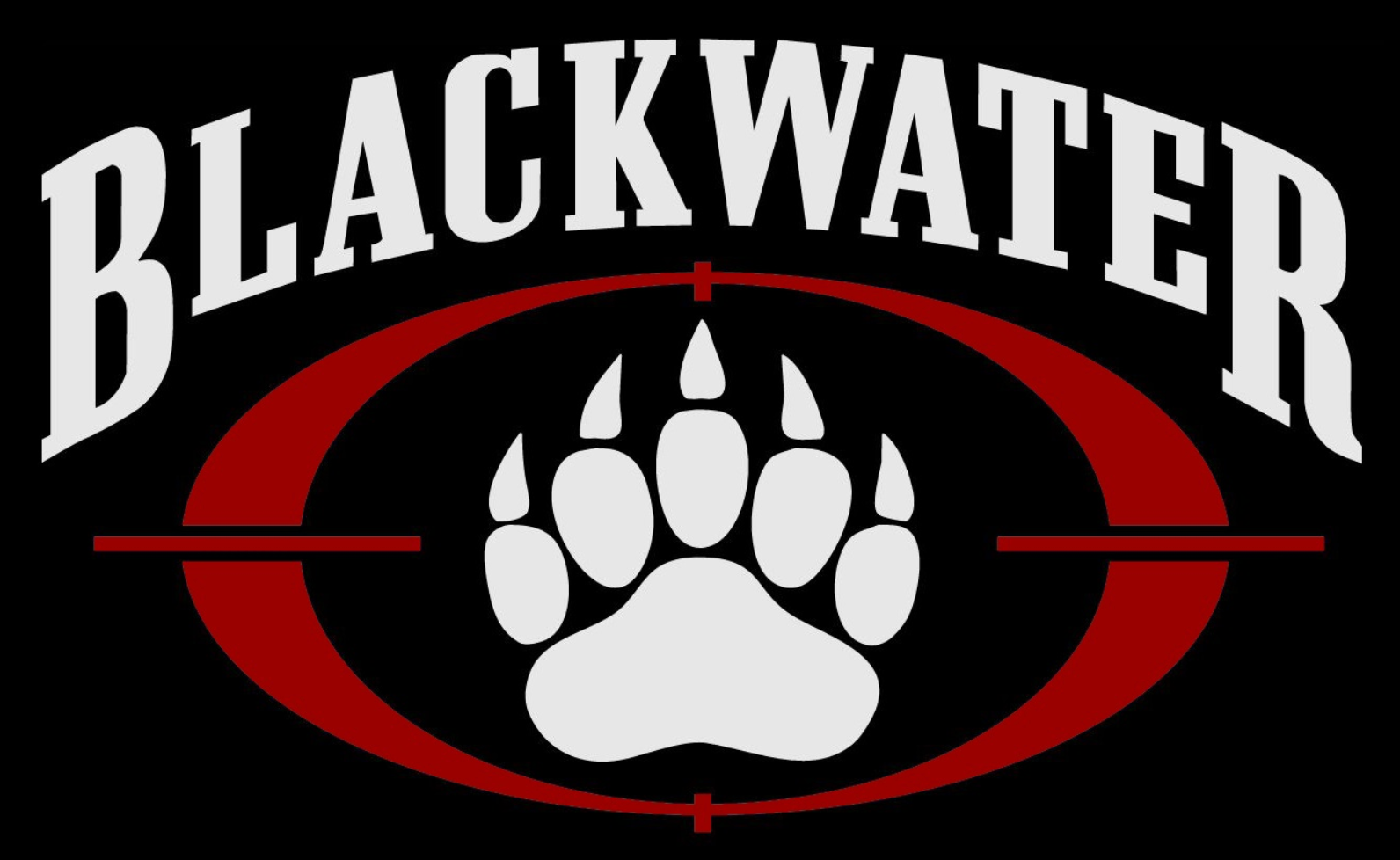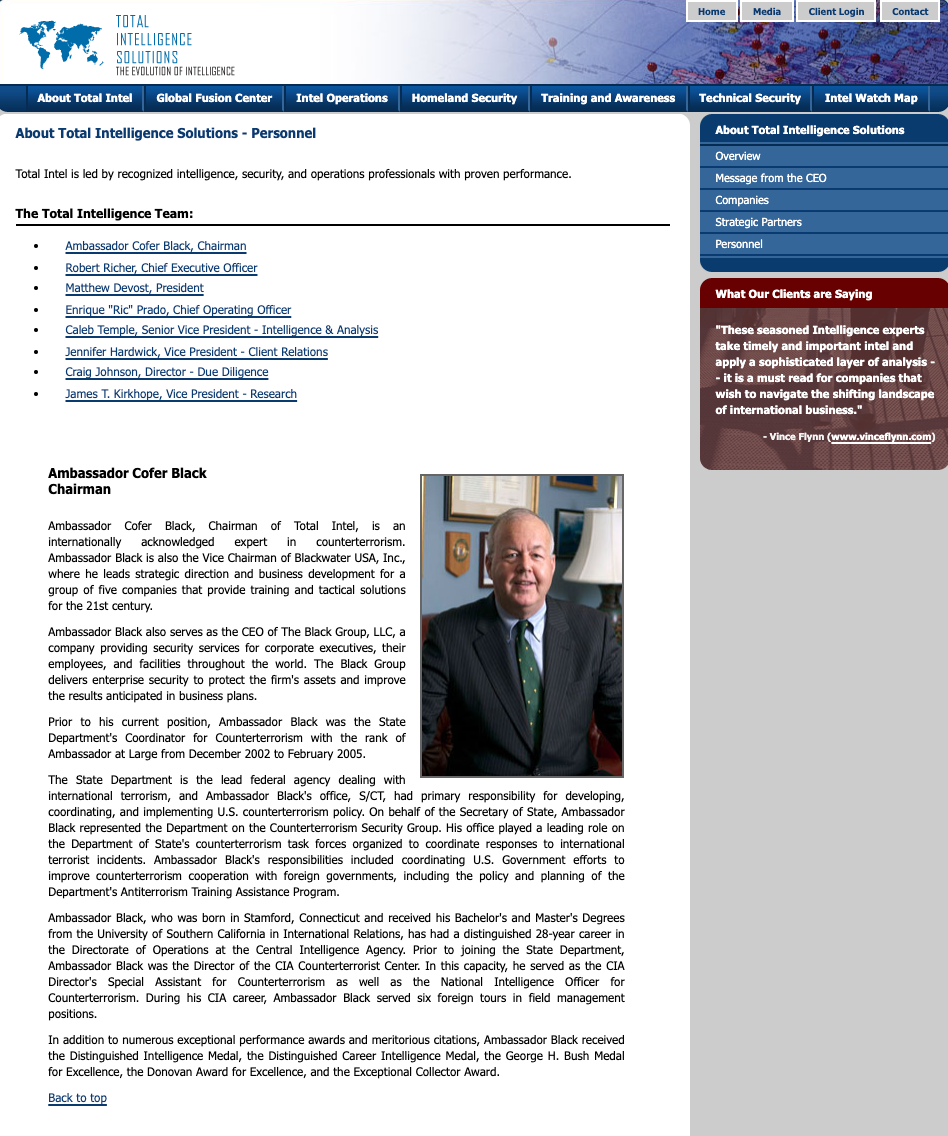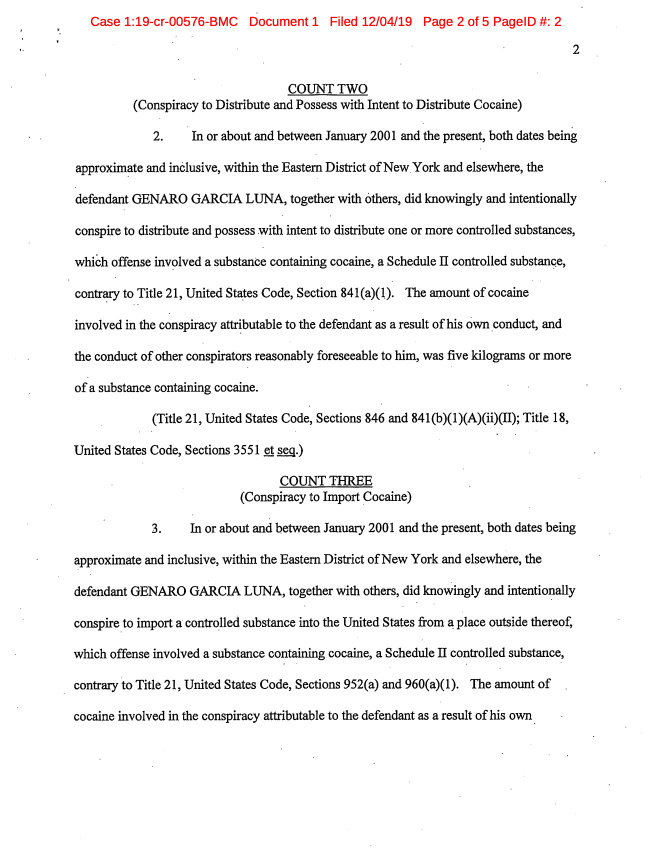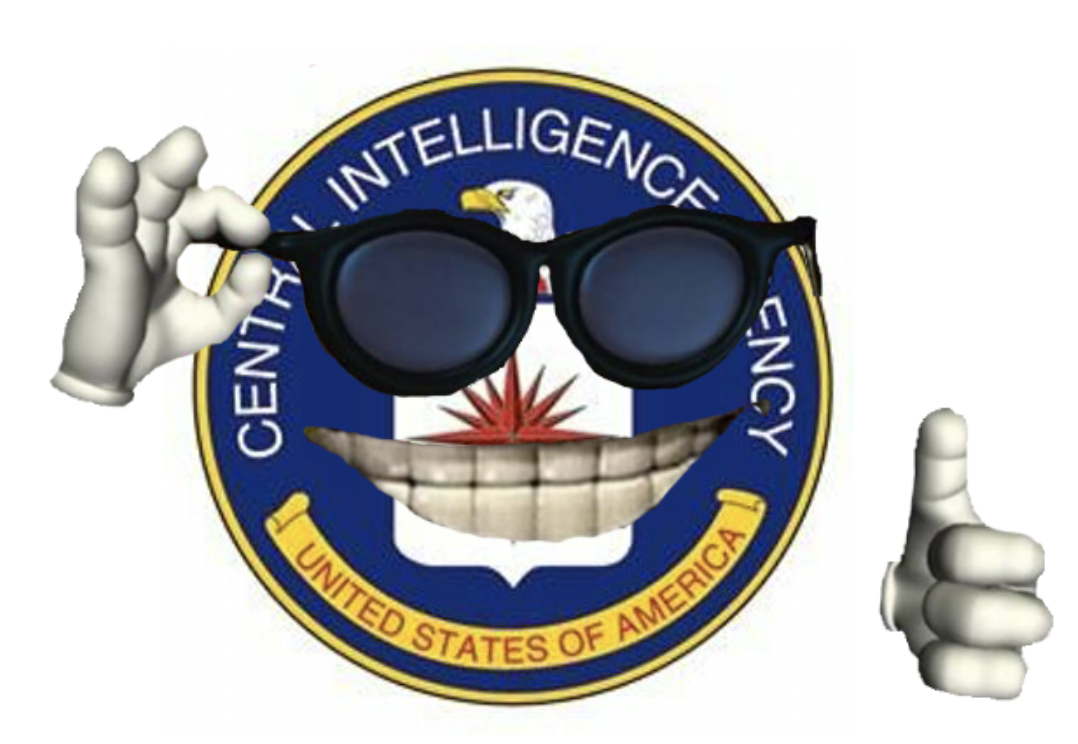Evan Wright's book How to Get Away with Murder in America recounts the remarkable life and times of Enrique "Ric" Prado, a mafia hitman-turned-CIA officer.
In the 1970s and 1980s, Prado was suspected in at least seven murders and an attempted murder, using methods which included car bombs and machine guns. Concurrent with Prado's work as an assassin for a trafficker selling tens of millions of dollars worth of cocaine, Prado joined the Central Intelligence Agency (CIA) to assist with the Reagan administration's paramilitary operations in Central America.

Several of the murders Prado was suspected of committing happened after he joined the CIA. Despite the fact that he was the prime suspect in multiple homicides, Prado never suffered any consequences legally or professionally.
In 1982, Prado took an assignment with the CIA's Special Activities Division embedded with the Contras, a brutal anti-communist insurgency intent on toppling the socialist Sandinista government in Nicaragua. Prado's assignment entailed training, supplying and fighting alongside the rebels.
In 1983, Congress passed a series of laws that effectively outlawed Prado's job helping the Contras. Undeterred, the Reagan administration continued to provide support for the unconventional war illegally through operations administered by the National Security Council and private companies. Ultimately, the administration's assistance to the Contras was half of the Iran-Contra affair.

In 1985, Robert Parry and Brian Barger reported that the Contras were trafficking cocaine through Costa Rica to fund their war effort. The story was based on the accounts of multiple U.S. law enforcement sources and would later be expanded into an explosive scoop connecting the crack epidemic in Los Angeles in the 1980s to the CIA's paramilitary forces running cocaine to fund an illegal war in Gary Webb's peerless Dark Alliance series for the San Jose Mercury News.

Whether or not Ric Prado was involved in any of the Contra's drug trafficking ventures is unclear.
After Nicaragua, Ric Prado continued working as a paramilitary adviser and operative for the CIA in Peru, and later in the Philippines. According to his bio for Total Intelligence Solutions, a private intelligence firm associated with Blackwater, Prado worked for at least a decade with the CIA's paramilitary Special Operations Group. During his time in Latin America, Prado reportedly worked closely with another notable CIA officer, Jose Rodriguez.

Jose Rodriguez was hired after law school by the CIA in 1976. According to reporting, most of Rodriguez's career with the Agency was spent in Latin America, with assignments in Argentina, Panama and the Dominican Republic. Rodriguez was reportedly questioned by the Federal Bureau of Investigation (FBI) in a probe related to the Iran-Contra scandal but was never charged with a crime. In 1996, during his tenure as the head of the CIA's Latin America division, Rodriguez was reprimanded for intervening on behalf of a childhood friend facing charges for possession of two ounces cocaine and illegal weapons in the Dominican Republic who also worked for the Agency at one time. Rodriguez reportedly contacted the CIA's station chief in the D.R. and asked him to speak to local authorities. The offense ended up costing Rodriguez the Latin America division chief position in 1997. Despite an Inspector General's report which noted "a remarkable lack of judgment," Rodriguez was later assigned as the station chief in Mexico (sometime between 1997 and September 2001). After 9/11, Rodriguez was appointed as the chief operating officer for the CIA's Counterterrorist Center (CTC), which was headed by Joseph Cofer Black at the time.

Cofer Black was a legend within the CIA's Directorate of Operations (D.O.). During the Reagan administration, Black oversaw a covert program to arm anticommunist guerrillas in Angola from the neighboring country of Zaire where he was stationed. In the 1990s, Black consummated his reputation within the D.O. by capturing Ilich Ramirez Sanchez, aka Carlos the Jackal. From June 1998 until June 1999, Black worked as the deputy chief of the CIA's Latin America division, where Jose Rodriguez had previously worked as division chief. From June 1999 until May of 2002, Black served as the head of the CTC.
Before 9/11, Cofer Black and Director of Central intelligence George Tenet pitched an idea to the administration for an assassination program to address the growing threat from Al Qaeda. According to reporting by Politico:
The drama of failed warnings began when Tenet and Black pitched a plan, in the spring of 2001, called 'the Blue Sky paper' to Bush’s new national security team. It called for a covert CIA and military campaign to end the Al Qaeda threat—'getting into the Afghan sanctuary, launching a paramilitary operation, creating a bridge with Uzbekistan.'
The Bush administration ultimately decided against it, but the proposal would soon be revisited.
After 9/11, Black led the CTC's hunt for Al Qaeda and Osama bin Laden. The U.S. ultimately failed to capture the Saudi terrorist despite having a fix on his location at Tora Bora and an earlier offer from the Taliban to hand over bin Laden. With the world's most wanted terrorist at large, the Bush administration proceeded with an ambitious and fateful plan to expand the War on Terror.


Cofer Black was fired from the CIA supposedly for providing information on background to The Washington Post for an April 2002 story which suggested that the Department of Defense was responsible for allowing bin Laden to escape at Tora Bora. In May 2002, it was reported that Black had stepped down from his position as the head of the CTC.

After Cofer Black was fired, Jose Rodriguez was promoted as the new head of the CTC in May 2002. Black was subsequently appointed Ambassador at large for the State Department by the Bush administration, where he served as the counterterrorism coordinator from October 2002 until he joined Blackwater USA as Vice-Chairman in February 2005.

Before it was the most well-known private military contractor in the world, Blackwater started as a private shooting range and steel target manufacturer formed in 1997 by Erik Prince, a former Navy SEAL. After 9/11, Blackwater received an "urgent and compelling" no-bid contract from the CIA in early 2002 with the help of a personal acquaintance of the Prince family, Alvin Bernard "Buzzy" Krongard.
Buzzy Krongard was appointed as the executive director of the CIA by George Tenet in March 2001. Krongard's work with the CIA officially began in 1998, but it was rumored that he had actually been working for the Agency for years before that under non-official cover (NOC) as the chairman of Alex. Brown, the investment banking firm (subsequently bought out by Deutsche Bank after Krongard's departure) that fortuitously purchased 95% of United Airlines put options on September 6, 2001 and 150,000 shares of American Airlines put options on September 10 (i.e. bet against UAL and AAL days before 9/11). In 2014, a banker in Baltimore claimed that Krongard recruited him as a NOC for the CIA in 1991, suggesting that Krongard's involvement with the Agency preceded his executive director appointment.

Thanks to Buzzy Krongard pulling some strings, the CIA handed Blackwater their first contract in April 2002. For $5.4 million dollars, Blackwater would train and provide an 18-man team and two commanders for covert security services for the CIA.

The War on Terror was a bonanza for private military contractors like Blackwater. Contractors were an attractive option from the government's perspective because they could often do the job for cheaper and with less liability than soldiers or other government agents. By employing contractors, the government could pursue politically sensitive objectives free from the liability of doing so themselves.
The business was so good that Blackwater, Triple Canopy and DynCorp began recruiting former special operations forces from Central and South America to keep up with demand while keeping costs down.
Latin American contractors were present in Iraq since at least November 2, 2003, when a Colombian national was reportedly killed with small arms fire in Balad, Iraq north of Baghdad. The United Nations Working Group on Mercenaries later found that two groups of 77 Chilean Blackwater contractors were deployed to Iraq in February 2004.
In addition to paying them less, there were other incentives for using Latin American mercenaries in the Middle East.
The story broke in 2009 that the CIA's covert assassination program, proposed originally in Cofer Black's Blue Sky paper in the spring of 2001, had been outsourced to Blackwater in 2004. According to reporting, three former intelligence officials alleged that Ric Prado ran the CIA's assassination program when it was started under George Tenet, who reportedly canceled it because of the risks involved. The program was revived in 2004 under Tenet's successor, Porter Goss, when Jose Rodriguez, then head of the CIA's clandestine service, reached out to Ric Prado at Blackwater, with whom he had worked previously in Latin America and at the CTC. In 2004, Prado was working vice president of special programs at Blackwater and negotiated an agreement with the CIA. The Blackwater-CIA assassination program reportedly ran from 2004-2006.

In How to Get Away with Murder in America, Evan Wright interviewed two Blackwater contractors who explained their involvement in assassinations in Afghanistan from 2008-2010. One of the contractors described working in a support role and another described working as a hitter. The hitter said that he and his partner were selected for one such assassination because of their darker complexion as Mexican Americans, which allowed them to blend in as Afghan civilians.
In 2010, James Risen and Mark Mazzetti reported that Blackwater Worldwide had built a network of over 30 shell companies and subsidiaries in tax havens such as Barbados to hide their involvement in government contract work.



One of those subsidiaries was Total Intelligence Solutions, whose executive board included three amigos from the CTC: Cofer Black, Robert Richer and Ric Prado. Launched in February 2007, Total Intelligence Solutions offered CIA expertise for private corporate clients. According to reporting from Ken Silverstein in 2006, Blackwater was "aggressively" recruiting Jose Rodriguez, who was the CIA's clandestine service chief at the time. Ultimately, Rodriguez chose a different path.
In an internal email from Total Intelligence Solutions from October 2007 obtained by The New York Times, Ric Prado claimed that Blackwater had "a rapidly growing, worldwide network of folks that can do everything from surveillance to ground truth to disruption operations." In the email, Prado wrote to another Blackwater official to ask whether the Drug Enforcement Administration might be interested in their services. According to Prado, the "worldwide network of folks" were "all foreign nationals, so deniability is built in and should be a big plus."
The email was sent in the aftermath of September 16, 2007, when Blackwater contractors killed 17 unarmed civilians and wounded another 24 in Nisour Square in Baghdad. The incident was a turning point for Blackwater and led to a number of congressional inquiries and revelations about ongoing investigations of the company.
In November 2007, a congressional probe of the State Department's oversight of Blackwater uncovered that Buzzy Krongard was on the company's advisory board. The revelation came after the State Department Inspector General, Howard Krongard, Buzzy's brother, was questioned by congressional investigators. Howard "Cookie" Krongard, who had initially denied the allegations about his brother's involvement with the company, was forced to recuse himself from all Blackwater related matters.

According to a House Committee on Oversight and Government Reform report, Cookie Krongard’s office began an investigation in March 2006 into allegations that Blackwater had smuggled weapons into Iraq which wound up in the hands of the PKK, a Kurdish separatist group in Turkey designated as a foreign terrorist organization. When the Department of Justice contacted the State Department during their investigation, Krongard reportedly "indicated his strong concerns about the participation of multiple agencies [in the Blackwater inquiry] and the potential impact of the investigation on the Department of State’s efforts in connection with the war in Iraq."
In the aftermath of the Nisour Square massacre, it was also reported that in September 2006, Blackwater began working on plans to build a training facility along the U.S.-Mexico border in Portero, California. Although plans for the facility were ultimately scrapped, the responsibility for training counternarcotics forces in countries like Afghanistan and Colombia followed a familiar trend of privatization. In 2007, Blackwater was tapped for a Department of Defense program known as the Counter-Narcoterrorism Program Office (CNTPO).



On January 19, 2001, the night before the inauguration of President George W. Bush in the U.S., El Chapo was let out of the maximum security Puente Grande prison in Jalisco, where he was serving a 20-year sentence for drug charges. The official version reported at the time was that Chapo bribed a prison guard to escape by hiding in a laundry cart, but El Chapo himself later claimed he was allowed to walk out of the prison.

Analogous to Osama bin Laden's apparent ability to evade the U.S. in the aftermath of 9/11, Chapo Guzmán's incredible escape gave the Mexican Drug War an arch-villain to chase. Mexico's bloodiest years in modern history ensued as Genaro García Luna led two federal security agencies as head of the Federal Investigation Agency (2001-2005) during Vicente Fox's administration and the Secretary of Public Security (2006-2012) during the presidency of Felipe Calderón.

In a declassified cable from 2006, the U.S. Embassy in Mexico presented an overview of the new presidential administration's security cabinet. On the incoming Secretary of Public Security, the communiqué noted that:
Genaro García Luna has been a trusted liaison, partner and friend of the FBI since his days at the [Federal Preventative Police]. He is a 'big picture guy' and strategist, approaching issues and problems like the engineer that he is. His personal reputation is very good, however that of some of his underlings has not been as favorable.
In December 2019, that "trusted liaison, partner and friend of the FBI" was arrested by U.S. authorities for a drug trafficking conspiracy spanning almost 19 years. According to the indictment, Genaro García Luna conspired with the Sinaloa cartel to traffic multiple tons of cocaine, marijuana, heroin and methamphetamine while laundering the illicit proceeds beginning in January 2001, the same month that Joaquín "El Chapo" Guzmán Loera "escaped" from prison for the first time hours before the beginning of the Bush administration.




From 2012 until the time of his arrest, Garcia Luna lived in Florida and operated a security consultancy firm called GLAC with offices in Miami and Mexico City. According to the company's website, GLAC's executive board members as of October 2017 included Raul Roldan, formerly the FBI’s chief representative at the U.S. embassy in Mexico, and Jose Rodriguez, the aforementioned former CIA clandestine service chief.


